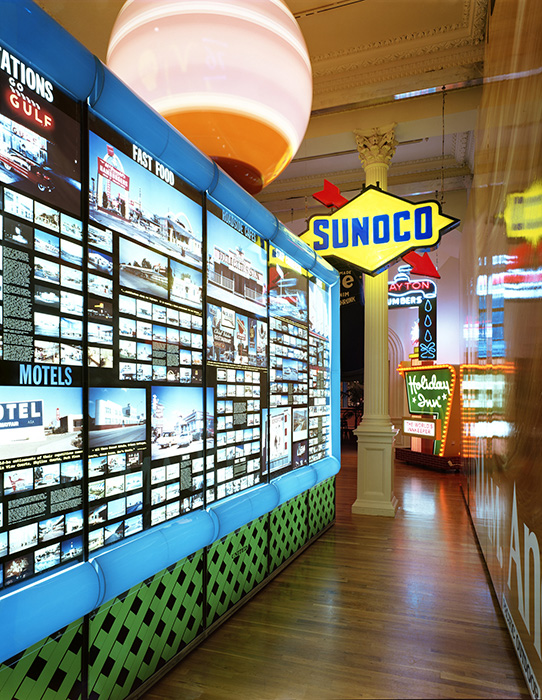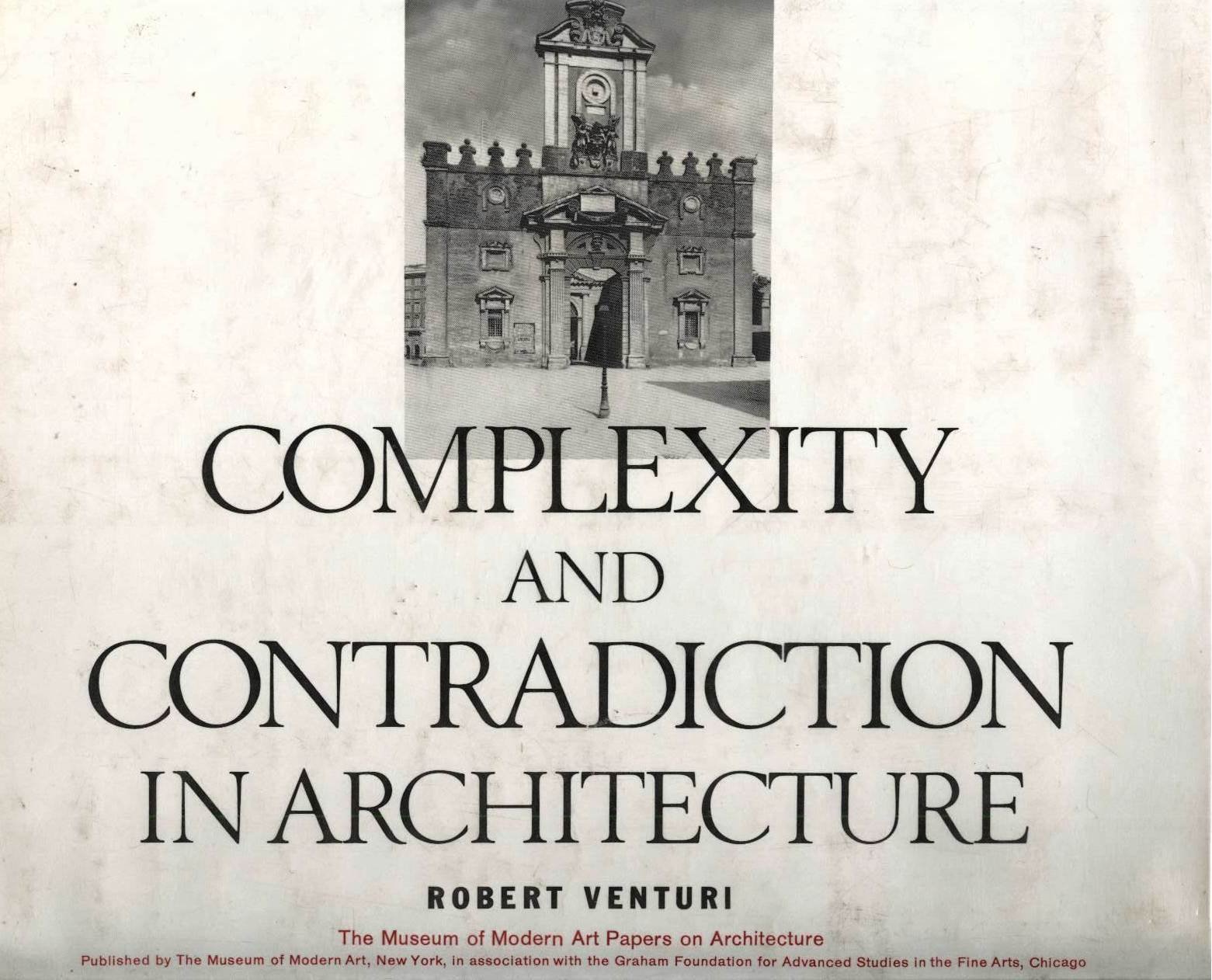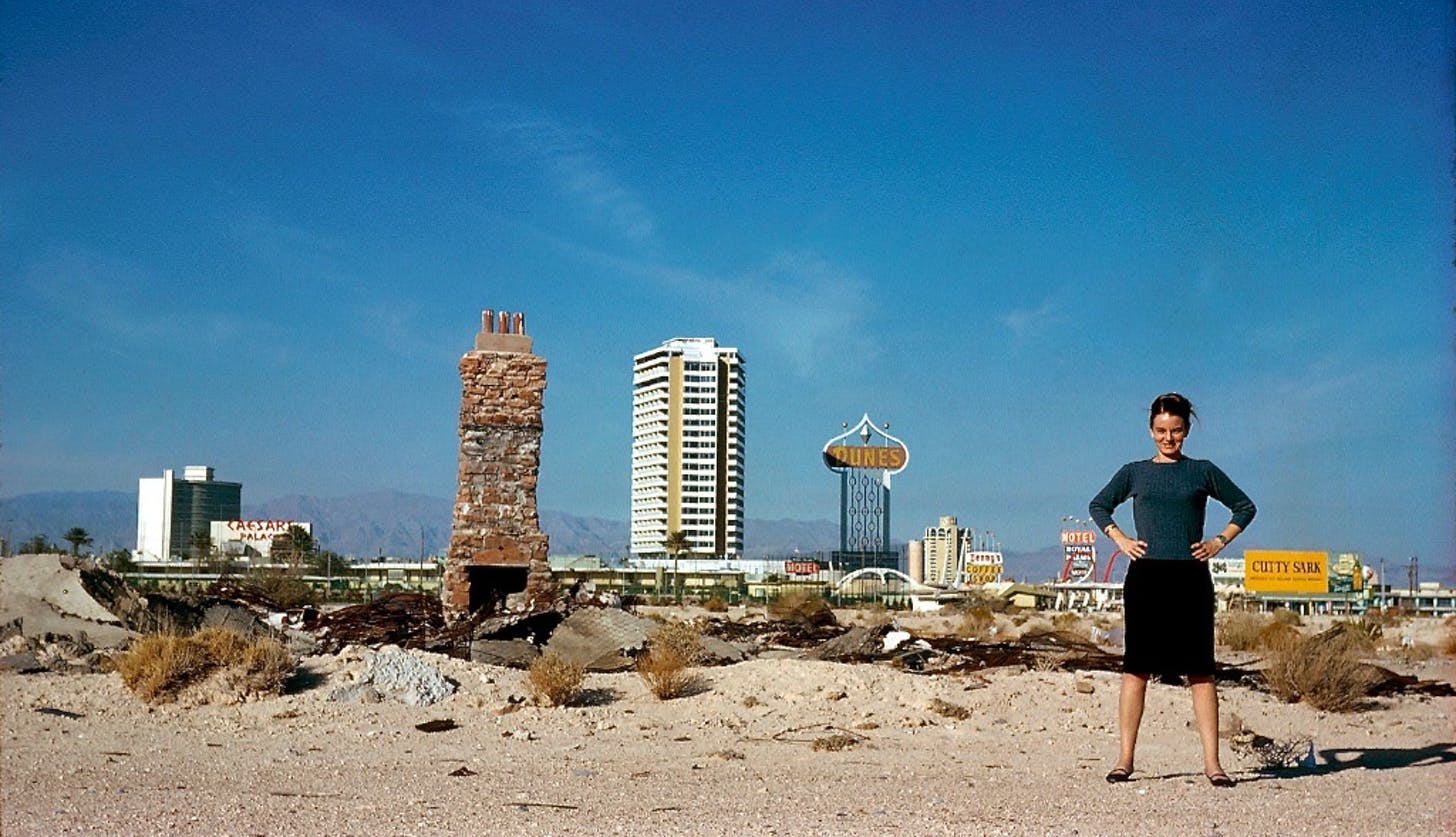Thoughts on hearing of the death of Robert Venturi.
When I think about my early influences as a young photographer, I always return to the fact that I was an urban design major at the University of Virginia in the early ‘70s. I left the field to go to art school, but my path as a photographer has always circled back to that original interest – a fascination with the built environment.
Planners and architects want order, by and large, and great buildings often stand apart from the riff raff of the visual turmoil of the city. I was torn between the ideas of order and chaos in photography. I wanted both. I wanted formally rigorous photographs, but I also wanted to include the random detritus of urban life. I struggled with this dichotomy at first, but eventually came to celebrate it.
At some point during the ‘70s I came across Complexity and Contradiction in Architectureby Robert Venturi, and subsequently, Learning from Las Vegas by Venturi and Denise Scott Brown. Complexity and Contradiction called for a more inclusive way of looking at architecture, and Learning from Las Vegas expanded on the idea that vernacular architecture was a legitimate expression of the world we lived in, and should be embraced, not denigrated.
It was an easy jump for me to apply these ideas to photography, and I was certainly not the only photographer inspired by Venturi and Scott Brown’s writing. Although I loved the elegantly minimalist work of artists like Donald Judd and Agnes Martin, I found that the more reductive photographs became, the less they interested me — the less they seemed to utilize the descriptive power of the medium. As Venturi wrote: “I am for messy vitality over obvious unity. I include the non sequitur and proclaim the duality.”

Signs of Life: Symbols in the American City
In 1975 Venturi commission Stephen Shore to make photographs for an upcoming exhibition at the Renwick Gallery in Washginton, D.C. called Signs of Life: Symbols in the American City. It was a match made in heaven: Shore’s omnivorous eye and Venturi/Scott Brown’s inclusive architectural philosophy. Shore said later, “I traveled from Los Angeles to New York and photographed along the way, keeping in mind a list of different kinds of architecture that Scott Brown and Venturi had given me.”
In 1975 I was in Baltimore studying photography, and although I was unaware of the show at the Renwick, I did discover the work of Stephen Shore along with the color photographs of William Eggleston and Joel Meyerowitz. They are each very different artists, but all share an interest in giving expression to the commonplace – the world as we find it.
Aaron Betsky, the architectural critic, recently wrote:
Toward the end of Complexity and Contradiction, Venturi quoted art historian August Heckscher when he said that he wanted a “unity which ‘maintains, but only just maintains, a control over the clashing elements which compose it. Chaos is very near; its nearness, but its avoidance, gives … force.’ ” He then ends the book with a call for us to look at the “everyday landscape, vulgar and disdained,” to inspire “architecture as an urbanistic whole.”
Photography has been connected to architecture and the urban landscape from the very beginning – from Niépce’s first fleeting image of buildings outside his window – to Atget, Abbott, and Evans. Robert Venturi and Denise Scott Brown’s ideas about landscape and architecture have inspired, directly or indirectly, a whole generation of photographers. We have all absorbed their method of keen, but non-judgmental, observation, whether we’ve thought about it or not. We take it for granted, a fact that illustrates the depth and breadth of what Venturi called his “gentle manifesto.”

